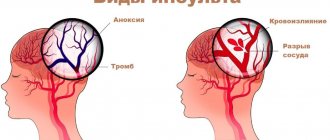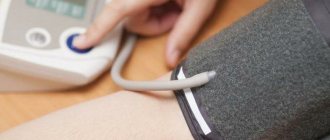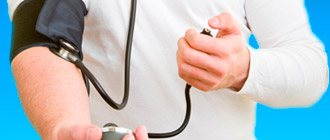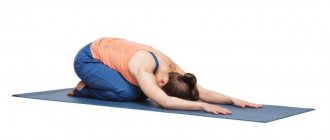Description of the examination
The heartbeat is accompanied by electrical impulses, which are recorded by a special device - a cardiograph. The device has several sensors that collect information from various points of the human body, which are located in the chest area, on the upper and lower extremities. A cardiogram represents waves on a graph corresponding to each phase of the heart rhythm.
How is an ECG done? The procedure for patients of different ages is carried out according to the same scheme. The purpose of the manipulation is to record the contractions and relaxations of the heart muscle. The diagnostic procedure is carried out in stages: first, sensors are fixed on the human body, and then electrodes transmit information about the work of the heart to the device.
The cardiograph produces a schedule according to which the specialist determines whether the patient has a particular pathology and draws up a suitable treatment regimen. The procedure is carried out quickly and has no absolute contraindications.
Using an ECG, cardiovascular diseases such as heart defects, myocardial infarction, inflammatory diseases, etc. are diagnosed. Not only the correct conduct of an ECG is important, but also preparation for it and a competent interpretation of the result. Only these measures taken together will make it possible to promptly identify and eliminate dangerous pathologies of the circulatory system.
How many times a year can the examination be done? An ECG is recommended to be performed once a year for persons over 40 years of age and patients with heart problems. How often a patient needs to be examined is determined by the doctor depending on his state of health.
Pressure 220 (200) per 100 (110,120,130): what to do, causes and consequences
Have you been struggling with HYPERTENSION for many years without success?
Head of the Institute: “You will be amazed at how easy it is to cure hypertension by taking it every day...
Read more "
High blood pressure may indicate hypertension and other ailments. A decrease in pressure can only occur after the cause of the condition has been eliminated; for this you should seek medical help.
High blood pressure is the most commonly reported cardiovascular disease. Pressure is the force with which blood pushes against the walls of the arteries as it moves through the body. Blood can fill the arteries only to a certain extent.
High blood pressure from 180/90 mmHg. Art. and more can lead to serious diseases, for example, which are dangerous to the full health and life of a person. Hypertension is also a leading cause of heart attacks.
How to take measurements
A person’s blood pressure consists of two indicators. The first, higher one, shows systolic pressure - the pressure inside the arteries when the heart fills them with blood. The second number expresses diastolic pressure, that is, the pressure inside the arteries when the heart breathes between beats.
Normally, blood pressure gradually increases from 90/60 mmHg. Art. at birth and up to 120/80 in a healthy adult. If a person jogs or drinks alcohol, the blood pressure will rise noticeably, but this is not a cause for concern.
A person’s blood pressure rises and falls under the influence of emotional state and physical activity. For one person, a reading of 130/90 mmHg is considered normal, while another person feels unsatisfactory in such cases.
If you have persistently high blood pressure, you should visit your doctor. With this pathology, the heart works at its limit. In addition to blood vessels, deformations occur:
- brain,
- eye,
- kidney
If the pressure is 140/90 mmHg. Art. and higher with measurements of more than two, then we can talk about hypertension. When the pressure is 200/120 or higher, urgent medical attention is needed. If you have diabetes and high blood pressure, treatment should begin at 130/80 mmHg. Art.
Scientists include people whose blood pressure is more than 120/80 mmHg. Art, in a category that has a chance of developing hypertension. This condition is called prehypertension. Prehypertension increases the likelihood of system and organ defects, so it is important to begin timely treatment.
Because hypertension often has no symptoms, it is called the “silent killer.” It is typical that symptoms may not appear even with serious complications. The disease is severe when the pressure is 220/110 mmHg. Art and above provokes:
- vision problems,
- heart attack,
- stroke,
- kidney failure.
Hypertension leads to heart failure, a common but very dangerous disease that causes breathing problems. It is generally accepted that people with high blood pressure have malignant hypertension with a diastolic pressure of more than 130 and a systolic pressure of more than 200 mmHg. Art. This type of hypertension is a very serious disorder, since various organ damage occurs very quickly.
High blood pressure can be controlled and corrected. To do this, you must first of all systematically measure your blood pressure.
Risk group
on
There are several categories of people who are most likely to develop hypertension. People most often affected by high blood pressure are:
Why do you feed pharmacies if hypertension is afraid of the usual like fire...
Tabakov has revealed a unique remedy against hypertension! To reduce blood pressure while preserving blood vessels, add to…
- with a genetic predisposition,
- African Americans,
- aged over 55 years,
- overweight
- leading a passive lifestyle,
- smokers and alcohol abusers,
- consuming unhealthy and highly salty foods.
Hypertension may also affect patients who use certain medications, such as nonsteroidal anti-inflammatory drugs, decongestants, and drugs such as cocaine.
Norms and classifications of arterial hypertension
There are three degrees of the disease.
- With stage 1 hypertension, the pressure is from 140/90 to 160/99 mmHg. Art. The pressure rises and falls abruptly. If hypertension at this stage is not treated, it transforms into more serious stages,
- Stage 2 hypertension is called moderate. Here the pressure changes to 179/109 mmHg. Art. In this case, a protracted increase in pressure is observed. The indicator rarely drops to normal,
- Stage 3 hypertension is the most severe. Pressure starts from 180/110 mm Hg. and stays stable.
Normal blood pressure varies from person to person. Medicine suggests taking 120/80 mmHg as a normal indicator. These indicators are observed in people aged 20 to 40 years.
Normal blood pressure for ages 16 to 20 is usually slightly low. This applies to both systolic and diastolic pressure. The physiological norm is blood pressure at rest at 100/70 mm Hg.
In general, blood pressure is considered normal in the range of 90 - 139/61 - 89 mm Hg. Doctors consider 120/80 mmHg to be the absolute norm. Slightly elevated blood pressure – 130/85 mmHg, elevated normal blood pressure – 139/89 mmHg. An increase in the indicator to an increase of 140/90 mmHg and above indicates an existing pathology.
Over time, irreversible processes begin in the human body, causing an increase in blood pressure throughout life. Over the years, any person's blood pressure increases.
There are blood pressure standards based on a person’s age and gender.
- At 20 years old, blood pressure in men is 123/76, in women 116/72 mm Hg,
- At 30 years old, men have 126/79, women 120/75 mmHg. st,
- At 30–40 years old, men have 129/81, women 127/80 mm. rt. st,
- At 40–50 years old, men have 135/83, women 137/84 mmHg. st,
- At 50–60 years old, men have 142/85, women 144/85 mmHg. st,
- After 70 years, men have 142/80, women 159/85 mm Hg. Art.
As the data shows, changes due to age affect both the upper and lower blood pressure levels. It is important to remember that these are averages and do not reflect individual patterns.
Not only high blood pressure, but also a decrease in its indicators is a characteristic sign of deterioration in the functioning of body systems. Therefore, the ability to take measurements with a tonometer can be attributed to the prevention of almost all ailments.
To identify the dynamics of changes in blood pressure, you should keep a diary.
Constantly high blood pressure
The third stage of hypertension is the most severe. In this case, the constant pressure exceeds 180/100 mmHg. Art. Gradually a person gets used to this condition, but the heart works under high load and wears out a lot. Patients often experience:
- cardiac ischemia,
- heart rhythm disturbance,
- angina pectoris
- the formation of heart failure.
Thus, at any age of a person, a blood pressure of 120/80 mm Hg is considered normal. Art. with slight deviations in both directions. If blood pressure systematically increases to 160/100 mm Hg. Art. or remains at this level for a long time - this indicates the initial stage of hypertension.
Regardless of what age a person is, he should immediately consult a doctor for a thorough examination. The doctor sets the task of clarifying the diagnosis by conducting diagnostics. After identifying concomitant diseases, specific treatment is prescribed.
The examination includes:
- examination by a therapist,
- study of medical history (heredity, work, bad habits, general lifestyle),
- general clinical analysis of urine and blood,
- blood for cholesterol and sugar levels, ECG,
- consultation with an ophthalmologist, fundus examination,
- examination by a neurologist.
If the need arises, an endocrinologist or cardiologist should be involved in the diagnosis. The following may also be prescribed:
- Ultrasound of the heart,
- MRI,
- 24-hour blood pressure monitoring.
After the examination and study of the medical history, the doctor reviews the results and forms a treatment plan. In severe stages of hypertension, the person should be hospitalized for more intensive treatment.
It is important to visit a doctor in any case, at least to find out what exactly to do if your blood pressure increases.
The doctor should measure the patient's blood pressure and consider lifestyle changes. In particular you need:
- weight loss,
- proper diet with a reduction in fat and salt,
- moderate physical activity,
- giving up alcohol, smoking and coffee,
- walks in the air.
It is necessary to consume vegetables and fruits rich in potassium and magnesium in your diet, including:
- greenery,
- carrot,
- legumes,
- sea kale.
You should buy a tonometer and take measurements twice daily - in the morning after getting up and in the evening before going to bed.
It is necessary to take medications only as prescribed by your doctor. All medications for high blood pressure are prescribed for a certain time to achieve a lasting result.
Diuretics are used, for example:
- Furosemide,
- Indapamide,
- Arifon,
- Indap.
These products reduce swelling by removing excess fluid. Therapy begins with diuretics, if there are no such diseases:
- diabetes,
- renal failure,
- lactation and pregnancy,
- gout,
- allergy.
Beta blockers are also used:
- bisoprolol,
- metoprolol,
- Celiprolol.
These drugs reduce blood pressure by dilating blood vessels and reducing the load on the heart muscle. The medicines should not be taken if you have allergies, bradycardia or pregnancy.
ACE inhibitors:
- Enalapril,
- Perindopril,
- Ramipril.
These drugs dilate blood vessels and are contraindicated in cases of renal impairment and pregnancy.
Calcium antagonists include:
- Verapamil,
- Amlodipine,
- Diltiazem.
These drugs show effectiveness in hypertension, accompanied by increased heart rate and heart rhythm disturbances. The drugs should not be used during pregnancy or bradycardia.
Quite often, combinations of funds from different groups are used. May be assigned:
- sedatives,
- phytotherapy,
- medicines to strengthen the heart muscle,
- statins and other drugs.
During pregnancy, high blood pressure is common, especially after the 20th week. There is a physiological reason for this - the volume of circulating blood increases due to the fetus, so the heart works harder, the pulse quickens and blood pressure rises. As a rule, the figure does not exceed 140/90 mmHg.
If a woman complains of unsatisfactory health in the first half of pregnancy due to high blood pressure, most often this indicates the appearance of hypertension.
Increase in pressure to 160/100 mmHg. Art. and more at any stage is a reason for hospitalization, since the fetus suffers with this pressure. If you have high blood pressure in the second half of pregnancy with a pathological urine test, you should consult a doctor, since there is a high risk of eclampsia, a serious complication.
Every morning a person with hypertension should begin with measuring their blood pressure. Treatment should only be carried out under the supervision of a physician. The video in this article will help you figure out what to do with high blood pressure and what to do.
on
Standard research design
The doctor does an ECG as follows:
- Before installing the sensors, make sure that there are no metal jewelry on the patient’s body. The patient's body is freed from excess clothing, the upper torso, wrists and shins are exposed.
- The electrode attachment points are treated with special compounds to better attach the sensors to the skin surface.
- The person takes a horizontal position, lying on his back. Before doing an ECG, the doctor writes down all the information about the patient.
- The sensors are fixed on the body using special clamps. The devices are placed in the lower part of the forearms, the outer and inner areas of the legs.
- The chest leads are attached to the skin of the chest in 6 zones using adhesive tape.
- The sensors are connected to the device according to a certain scheme: the red wire is attached to the right arm, the yellow wire to the left upper limb, the green wire to the lower left limb, and the white wire to the chest.
- Leads are registered. According to the standard scheme, the sensors are registered through alternate connections: 1 lead - the sensor from the left upper limb is connected to the electrode of the right hand, 2 lead - the sensor from the right upper limb is combined with the electrode of the left leg, 3 lead - the sensors of the limbs located on the left side are combined.
Read also: Which is better for heart problems: ECG or ultrasound?
Important! During the procedure, the person must not move and remain in a calm psycho-emotional state.
To register an electrocardiogram, the patient is recommended to follow some rules:
- during the diagnostic procedure, breathe evenly and avoid emotional overload,
- do not eat 2-3 hours before the procedure,
- Patients with severe shortness of breath are recommended to perform the procedure in a sitting position,
- Women should remove their bra.
Patients who have never had an ECG often ask: how long does the study take? Answer: about 3-5 minutes. Another question that interests women is whether it is necessary to take off their bra before an ECG? Answer: when recording an ECG, suction cups are placed on the surface of the skin of the chest, and any materials, including a bra, create interference.
GBUZ JSC "Krasnoborskaya Central District Hospital"
It is recommended to take a shower, because... After installing the electrodes, you will not be able to take water procedures for 24 hours.
For men, remove (if necessary) hair from the front of the chest.
Rules for wearing a halter:
Not recommended:
- Wet - take a bath, shower with it, swim in open water
— Expose the holter to low and high temperatures (for example, do not go to the bathhouse on the day of the test)
— The device must be protected from shock and vibration. It is advisable to avoid contact with aggressive household chemicals, especially those containing acids, during Holter monitoring.
- In addition, heavy, long-term physical activity is very undesirable, since, firstly, it can distort the results of the study, and secondly, due to increased sweat, the electrodes can come off
— It is not recommended to be near transformer booths or powerful power lines. And also come close to working electrical household and medical equipment
— During sleep, you should avoid turning on your stomach, as this may displace the electrodes or interfere with data recording.
— During monitoring, you should not wear metal jewelry, clothing with metal buttons, or a bra with metal clasps, as they may interfere with the ECG results.
Recommended:
— During the examination, it is better to give preference to cotton underwear and avoid wearing clothes made of synthetic and silk fabrics, which can accumulate static electricity.
— A diary is issued in which the patient notes his state of health, complaints, type of activity, physical activity, medication intake, time of wakefulness and sleep. And does a ladder test (according to indications)
— Exactly in time, complaints are noted in connection with which monitoring and other subjective sensations are carried out: weakness, dizziness, chest tightness, suffocation, palpitations, malaise, pain in the heart area, or pain in another location. You are asked to indicate the nature of the pain ( dull, pressing, stabbing, squeezing, etc.), as well as its duration. It should be indicated under what circumstances the pain arose (after physical or emotional stress, at rest, etc.) and went away (stopping while walking, after taking medication). Indicate the time of administration and the name of medications.
— Many drugs that the patient takes can change the normal activity of the heart. Therefore, if your doctor prescribes Holter monitoring for you, indicate what medications you are currently taking.
— If you accidentally disconnect a wire or electrode, the light on the device will light up. If you cannot replace the electrode yourself, contact medical personnel.
— After the end of the monitoring period, you return to the functional diagnostics room, the staff removes the device from you.
Measuring blood pressure - step-by-step technique
We present to your attention a step-by-step technique for measuring blood pressure at home. You will see that measuring your blood pressure at home with a tonometer is easy and convenient. You don’t need to go to the doctor every time for this. We recommend that everyone have a modern electronic blood pressure monitor at home. This device is not too expensive at the pharmacy, and can bring you great benefits - protect you from heart attack, stroke and other complications of hypertension. Useful article “Which tonometer to buy for home” - an independent review of home tonometers, objective information, no advertising.
Don't panic and don't grab the pills if your blood pressure is high according to the first measurement. Repeat the procedure at least twice more. On our website you will learn how to cure hypertension on your own, as well as what medications your doctor can prescribe. Good news: we will teach you for free how to maintain normal blood pressure without “chemical” pills, “starvation” diets and grueling exercise.
Remember that blood pressure is above 180/120 mmHg. requires immediate medical attention.
If the patient complains of frequent dizziness, then it is necessary to separately measure blood pressure in a standing position. If in this case the systolic pressure decreases by 20 mmHg. Art. or more, and diastolic - by 10 mm Hg. Art. or more than in a sitting position, a diagnosis of orthostatic hypotension is established - a disorder of the autonomic nervous system, characterized by a sharp decrease in blood pressure when the body position changes (from sitting or horizontal to vertical).
- The best way to recover from hypertension (quickly, easily, healthy, without “chemical” drugs and dietary supplements)
- Hypertension is a popular way to cure it at stages 1 and 2
- Causes of hypertension and how to eliminate them. Tests for hypertension
- Effective treatment of hypertension without drugs
- Cardiac ischemia
- Myocardial infarction
- Heart failure
- Diabetes
Which tonometer is better to use?
To measure blood pressure at home, we recommend using a semi-automatic blood pressure monitor with an upper arm cuff. This is the best option in terms of price and quality. You can buy a semi-automatic blood pressure monitor at the pharmacy - accurate and durable - for no more than $60. For such modest money you will get a modern device from Switzerland, the USA, Germany or Japan.
Automatic blood pressure monitors are less accurate. We believe that when measuring pressure, pumping air with a bulb is not such a big deal, and there is no point in overpaying for a fully automatic tonometer. Wrist or finger blood pressure monitors are not accurate enough. Their use is not recommended. Especially those on the finger.
Before purchasing, make sure the blood pressure cuff fits you. As a rule, medium-sized cuffs are suitable for most people, and blood pressure monitors come with them. Please do not use older blood pressure monitors where you need to listen to heart sounds with a stethoscope.
Step-by-step technique for measuring blood pressure
We further assume that you are using a semi-automatic electronic blood pressure monitor and do not need to listen to heart sounds with a stethoscope. Read the article “How to Prepare for Blood Pressure Measurement.” It is important to properly attach the blood pressure monitor cuff to your shoulder. It should be 2-3 cm above the elbow joint, and in height - at the same level as the heart. This is clearly shown in the picture.
- Wrap the cuff around your arm and secure it in position with Velcro.
- Hold the tonometer's bulb-shaped pump in your hand.
- By squeezing and unclenching the bulbar pump, inflate the air in the cuff until the tonometer shows a pressure of approximately 40 mmHg. Art. higher than what you expect.
- Begin deflating the cuff. To obtain reliable results, measuring blood pressure should be done slowly, at a speed of about 2 mmHg. Art. per second. The pressure in the cuff will decrease and blood flow through the artery will resume.
- Write down the resulting systolic and, through a fraction, diastolic pressure, without relying on memory.
- Take not one, but several blood pressure measurements at once. Because the results of the first measurement are often very overestimated. Measure 3-8 times in a row on the same hand, with an interval of several minutes. Until the results begin to more or less coincide, with a minimal difference. Before each new measurement, bend and straighten your arm to restore blood circulation. Calculate the average value of “similar” results and consider it reliable. Do not take into account measurement results that deviate greatly from all others.
- Record the measurement result in your diary. Please also indicate the date and time (morning, afternoon or evening). Also mark the hand on which the measurement was taken (right or left).
Why is it necessary to measure blood pressure several times in a row and average the result?
In most cases, the results of the first blood pressure measurement are overestimated. Because due to the squeezing of the arm by the tonometer cuff, the tone of the blood vessels greatly increases. This is an automatic, involuntary reaction of the body that needs to be taken into account and adapted to. If an experienced doctor measures your blood pressure, he will not be satisfied with one measurement, but will take it 2-3 times.
We recommend that you measure your blood pressure with a semi-automatic tonometer on one arm at least 3 times in a row. If the results of the second and third measurements are repeated, with a slight difference, then this is the patient’s real blood pressure value. If there is no coincidence, then do 4-8 “approaches” until you see stable repeatability. After this, calculate the average, write it down in your diary and analyze it.
Let's illustrate this technique for measuring blood pressure with specific examples.
Patient #1
| 1 | 154/94 |
| 2 | 137/84 |
| 3 | 136/86 |
In this case, blood pressure is the average of measurements Nos. 2 and 3.
Patient #2
| 1 | 156/96 |
| 2 | 138/89 |
| 3 | 134/82 |
| 4 | 132/78 |
| 5 | 129/78 |
In the second case, you can use the arithmetic average of measurements Nos. 3, 4 and 5 (it turns out 132/79) or only measurements Nos. 4 and 5 (it turns out 131/78). If we had limited ourselves to just one measurement, both patients would have been left upset and overtreated.
Analyzing the results
Now is the time to analyze the results of the blood pressure measurement you just took. Notes will help you with this:
- Blood pressure measurement: interpretation of results;
- Stages of hypertension
If your blood pressure is high, repeat the measurement after 60 seconds on the same arm, and then after another minute on the other arm. If the pressure on one arm is higher than on the other, future measurements should be taken on that arm. The diagnosis of hypertension can be made only if measurements for several days in a row show that the patient has consistently high blood pressure.
Many people worry that their blood pressure monitor is not accurate. In fact, the main problem is errors in the process of measuring blood pressure, not the quality of the devices. Watch the video “Is your tonometer lying?”, prepared by famous specialist Elena Malysheva. It does not discuss the comparative characteristics of different tonometers, but the technique of measuring blood pressure. It clearly shows the mistakes people make most often and how much these mistakes inflate results.
A single measurement is not enough to prescribe medications for hypertension to a patient. If you suspect that you have hypertension, do not make hasty conclusions. First, measure your blood pressure for a week. Do this every day at the same time, preferably in the afternoon or evening. Of course, all this is provided that you are feeling normal. If anything worries you, consult a doctor as soon as possible.
Benefits of home blood pressure monitoring
Doctors should more actively encourage their patients to measure their blood pressure at home. Because patients who use home blood pressure monitors receive significant benefits:
- The measurement results are more reliable because there is no white coat effect.
- When the patient clearly sees the results of treatment on the tonometer (blood pressure decreases), he willingly continues to take medications and follow the recommendations for a healthy lifestyle.
- It is easier for the patient to assess whether a particular medicine is suitable for him or not. However, remember that you need to give each medicine a minimum of 3 weeks before deciding whether it works well for you.
- How to avoid mistakes when measuring blood pressure
- Isolated systolic hypertension - important for elderly patients over 60 years of age
- Hypertension in pregnant women










